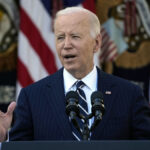As stress ripples through smaller banks in the U.S., the tightening in lending standards among those institutions is expected to reduce economic growth this year, according to Goldman Sachs Research.
While the macroeconomic impact of a pullback in lending is highly uncertain until the extent of the stress on the banking system becomes clear, economists in Goldman Sachs Research lowered their forecast for U.S. fourth-quarter GDP growth (year-over-year) by 0.3 percentage point to 1.2%. The new estimate incorporates expectations for tighter lending and reflect in part a larger downgrade to investment spending.
Small- and medium-size banks play an important role in the American economy. Lenders with less than $250 billion in assets account for roughly 50% of U.S. commercial and industrial lending, 60% of residential real estate lending, 80% of commercial real estate lending and 45% of consumer lending, according to a report by Goldman Sachs economists Manuel Abecasis and David Mericle. To the extent that banking stress that started with the resolution of Silicon Valley Bank has an impact in lending, it’s likely to be concentrated in a subset of small- and medium-sized banks.
While the two banks taken into receivership account for just 1% of total bank lending, the lending shares are 20% for banks with a high loan-to-deposit ratio, 7% for banks with a low share of FDIC-insured deposits and 4% for banks with a low retail share of deposits.
Our economists expect lending standards will tighten more, to a degree that’s greater than during the dot-com crisis, but less than during the financial crisis or the height of the pandemic. “Bank lending standards had already tightened significantly over the last few quarters to levels previously unseen outside of recessions, presumably because many bank risk divisions shared the recession fears that have been widespread in financial markets,” they wrote. “This is important because it means that lending standards started at a tight rather than a normal level, and as a result the incremental impact of a further tightening brought on by recent small bank stress might be more limited than it seems at first.”
When assessing the economic impact of tighter lending standards, our economists assumed that small banks with a low share of FDIC-covered deposits reduce new lending by 40% and other small banks reduce new lending by 15%. This implies a 2.5% drag on the total stock of bank lending, which economics studies suggest would result in a roughly 0.25 percentage point drag on 2023 GDP growth. Their statistical approach expands Goldman Sachs Research’s financial conditions growth impulse model to include bank lending standards, which they assume will tighten substantially further. This implies a drag on GDP growth of 0.5 percentage point beyond that already implied by the lagged impact of the tightening in recent quarters.
For monetary policymakers at the Federal Reserve — unless bank stress significantly changes the outlook — their goal for the year will be to keep demand growth below potential in order to keep the rebalancing of supply and demand on track. Tighter bank lending standards help to limit demand growth, sharing the burden with monetary policy tightening. Our economists’ analysis implies that the incremental tightening in lending standards that they expect from small bank stress would have the same impact on growth as roughly 25-50 basis points of rate hikes would have via their impact on market-based financial conditions.
As such, Goldman Sachs economist have penciled in a pause in Fed hikes for the March 21-22 meeting. They have otherwise left their Fed forecast unchanged and now expect a peak funds rate of 5.25-5.5%, but note sharply increased uncertainty around the Fed path from here.
Source : GoldmanSachs





































